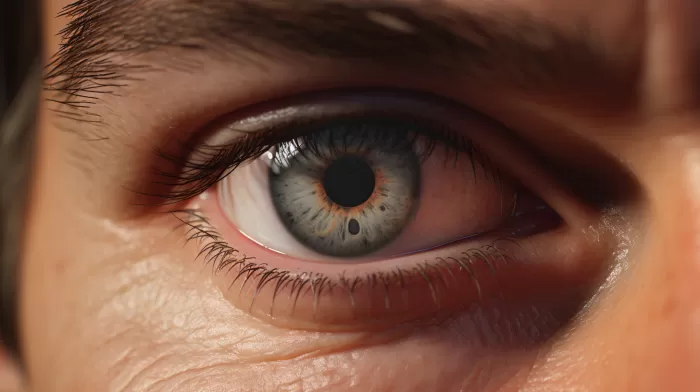We often hear that the eyes are the windows to the soul. But when it comes to truly understanding someone, you may want to shift your focus slightly. Researchers at the University of California Santa Barbara have discovered that the key to deciphering a person’s identity, gender, and emotional state lies just below their eyes. This area provides important information about the person’s focus and attention, and it turns out, we instinctively know it.
Trust your instincts
Our brains are wired to quickly assess people based on their facial expressions and appearances. It’s a survival mechanism that helps us gauge potential threats, build social connections, and navigate our environment. This “instinctive gaze” can be both rapid and unconscious, as pointed out by Miguel Eckstein, a professor of psychology at UCSB.
To investigate this instinctive glance, researchers used an eye tracker and over 100 photos of faces. They followed participants’ gaze as they attempted to identify the person’s identity, gender, and emotional state. “For the majority of people, the first place we look at is somewhere in the middle, just below the eyes,” says Eckstein. When participants were directed to focus on other facial features—such as the forehead or mouth—they were not as accurate.
The sweet spot for facial recognition
So, what makes the area below the eyes so insightful? For one, concentrating on this region helps us figure out where the person’s attention is directed. The eyes can reveal a person’s focus and emotions, while the position of their eyebrows, nose and cheekbones can provide valuable information about their identity and gender. By honing in on this area, we can obtain a holistic view of the person in front of us.
The importance of this region is also supported by studies on facial recognition technology. Many systems use the area around the eyes as a primary biometric marker, as it’s less prone to changes compared to other facial features like the mouth or jawline.
Improving social connections and communication
Now that you know the secret of decoding faces, how can you use this knowledge to improve your social interactions? Here are a few tips to help you make the most of this new information:
- Maintain appropriate eye contact: Maintaining eye contact is a sign of respect and attentiveness. However, don’t overdo it, as excessive eye contact can make the other person feel uncomfortable. Find a balance by occasionally letting your gaze drift to the area just below their eyes.
- Notice subtle facial changes: By focusing on the area below the eyes, you can become more attuned to nonverbal cues and emotions. As you practice, you’ll likely get better at noticing when someone is feeling happy, sad, angry, or anxious—and you can adjust your communication style accordingly.
-
Improve your listening skills: By paying closer attention to the faces of the people you’re conversing with, you’ll gain a better understanding of their emotions and thoughts. This can help you become a more empathetic and effective listener.
-
Enhance your emotional intelligence: Taking the time to learn and understand the emotional signals that people convey through their facial expressions can help you enhance your emotional intelligence. As you become more skilled at decoding faces, you’ll find it easier to navigate social situations, build rapport, and create deeper connections with others.
A crucial skill in the age of remote work
With so many people working remotely these days, our reliance on video calls has skyrocketed. While we may not be interacting face-to-face as much as we used to, knowing where to look during video calls can still be beneficial. By tuning into the area just below your colleague’s eyes, you can gain valuable insights into their emotional state, focus, and engagement levels.
Of course, facial expressions are just one piece of the puzzle when it comes to building effective communication and relationships. However, by honing in on the area below the eyes, you can develop a stronger understanding of those around you and enhance your own interpersonal skills.



